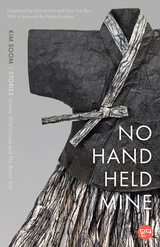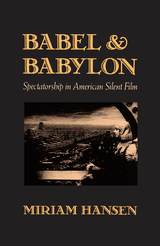
Although cinema was invented in the mid-1890s, it was a decade more before the concept of a “film spectator” emerged. As the cinema began to separate itself from the commercial entertainments in whose context films initially had been shown—vaudeville, dime museums, fairgrounds—a particular concept of its spectator was developed on the level of film style, as a means of predicting the reception of films on a mass scale. In Babel and Babylon, Miriam Hansen offers an original perspective on American film by tying the emergence of spectatorship to the historical transformation of the public sphere.
Hansen builds a critical framework for understanding the cultural formation of spectatorship, drawing on the Frankfurt School’s debates on mass culture and the public sphere. Focusing on exemplary moments in the American silent era, she explains how the concept of the spectator evolved as a crucial part of the classical Hollywood paradigm—as one of the new industry’s strategies to integrate ethnically, socially, and sexually differentiated audiences into a modern culture of consumption. In this process, Hansen argues, the cinema might also have provided the conditions of an alternative public sphere for particular social groups, such as recent immigrants and women, by furnishing an intersubjective context in which they could recognize fragments of their own experience.
After tracing the emergence of spectatorship as an institution, Hansen pursues the question of reception through detailed readings of a single film, D. W. Griffith’s Intolerance (1916), and of the cult surrounding a single star, Rudolph Valentino. In each case the classical construction of spectatorship is complicated by factors of gender and sexuality, crystallizing around the fear and desire of the female consumer.
Babel and Babylon recasts the debate on early American cinema—and by implication on American film as a whole. It is a model study in the field of cinema studies, mediating the concerns of recent film theory with those of recent film history.
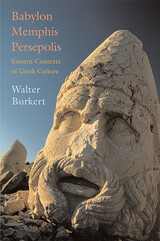
At the distant beginning of Western civilization, according to European tradition, Greece stands as an insular, isolated, near-miracle of burgeoning culture. This book traverses the ancient world’s three great centers of cultural exchange—Babylonian Nineveh, Egyptian Memphis, and Iranian Persepolis—to situate classical Greece in its proper historical place, at the Western margin of a more comprehensive Near Eastern–Aegean cultural community that emerged in the Bronze Age and expanded westward in the first millennium B.C.
In concise and inviting fashion, Walter Burkert lays out the essential evidence for this ongoing reinterpretation of Greek culture. In particular, he points to the critical role of the development of writing in the ancient Near East, from the achievement of cuneiform in the Bronze Age to the rise of the alphabet after 1000 B.C. From the invention and diffusion of alphabetic writing, a series of cultural encounters between “Oriental” and Greek followed. Burkert details how the Assyrian influences of Phoenician and Anatolian intermediaries, the emerging fascination with Egypt, and the Persian conquests in Ionia make themselves felt in the poetry of Homer and his gods, in the mythic foundations of Greek cults, and in the first steps toward philosophy. A journey through the fluid borderlines of the Near East and Europe, with new and shifting perspectives on the cultural exchanges these produced, this book offers a clear view of the multicultural field upon which the Greek heritage that formed Western civilization first appeared.
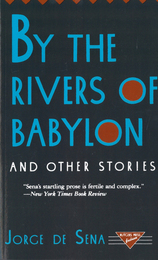
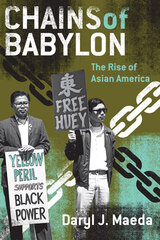
In Chains of Babylon, Daryl J. Maeda presents a cultural history of Asian American activism in the late 1960s and early 1970s, showing how the movement created the category of "Asian American" to join Asians of many ethnicities in racial solidarity. Drawing on the Black Power and antiwar movements, Asian American radicals argued that all Asians in the United States should resist assimilation and band together to oppose racism within the country and imperialism abroad.
As revealed in Maeda's in-depth work, the Asian American movement contended that people of all Asian ethnicities in the United States shared a common relationship to oppression and exploitation with each other and with other nonwhite peoples. In the early stages of the civil rights era, the possibility of assimilation was held out to Asian Americans under a model minority myth. Maeda insists that it was only in the disruption of that myth for both African Americans and Asian Americans in the 1960s and 1970s that the full Asian American culture and movement he describes could emerge. Maeda challenges accounts of the post-1968 era as hopelessly divisive by examining how racial and cultural identity enabled Asian Americans to see eye-to-eye with and support other groups of color in their campaigns for social justice.
Asian American opposition to the war in Vietnam, unlike that of the broader antiwar movement, was predicated on understanding it as a racial, specifically anti-Asian genocide. Throughout he argues that cultural critiques of racism and imperialism, the twin "chains of Babylon" of the title, informed the construction of a multiethnic Asian American identity committed to interracial and transnational solidarity.
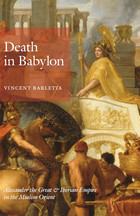
Though Alexander the Great lived more than seventeen centuries before the onset of Iberian expansion into Muslim Africa and Asia, he loomed large in the literature of late medieval and early modern Portugal and Spain. Exploring little-studied chronicles, chivalric romances, novels, travelogues, and crypto-Muslim texts, Vincent Barletta shows that the story of Alexander not only sowed the seeds of Iberian empire but foreshadowed the decline of Portuguese and Spanish influence in the centuries to come.
Death in Babylon depicts Alexander as a complex symbol of Western domination, immortality, dissolution, heroism, villainy, and death. But Barletta also shows that texts ostensibly celebrating the conqueror were haunted by failure. Examining literary and historical works in Aljamiado, Castilian, Catalan, Greek, Latin, and Portuguese, Death in Babylon develops a view of empire and modernity informed by the ethical metaphysics of French phenomenologist Emmanuel Levinas. A novel contribution to the literature of empire building, Death in Babylon provides a frame for the deep mortal anxiety that has infused and given shape to the spread of imperial Europe from its very beginning.

For those who believe that globalization is a purely modern phenomenon, this book holds a startling and absorbing lesson. From Egypt to Babylon immerses readers in a world of exotic empires and states as they waxed and waned and interacted in a period of extraordinary internationalism—all before the rise of the Persian Empire.
The ancient Egyptians, Minoans, Mycenaeans, Hittites, Canaanites, Hurrians, Aramaeans, Israelites, Urartians, Mannaeans, Assyrians, Phrygians, Kassites, Chaldaeans, Elamites, Scythians, Medes, and Persians: these are the societies who for a millennia peopled the world from the Aegean and Egypt in the west to what we know now as Iraq and Iran in the east. In a concise introduction, illustrated with objects drawn largely from the collections of the British Museum, this book takes the reader through the vast and varied landscape of this period, where a far-flung world was linked by military expansion, diplomatic relations, and movement of goods and peoples that brought about profound cultural exchanges and technological and social revolutions. The story brings the reader from the foundations of the Egyptian empire through the turmoil at the end of the second millennium bce to the unprecedented political unification of the whole region by kings of Persia.
From Egypt to Babylon weaves together the political histories of the region’s diverse societies for the first time, tracing shifting fortunes and burgeoning colonies, trading connections and cultural pressures in what was truly the world’s first international age.
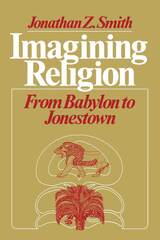
Making use of examples as apparently diverse and exotic as the Maori cults in nineteenth-century New Zealand and the events of Jonestown, Smith shows that religion must be construed as conventional, anthropological, historical, and as an exercise of imagination. In his analyses, religion emerges as the product of historically and geographically situated human ingenuity, cognition, and curiosity—simply put, as the result of human labor, one of the decisive but wholly ordinary ways human beings create the worlds in which they live and make sense of them.
"These seven essays . . . display the critical intelligence, creativity, and sheer common sense that make Smith one of the most methodologically sophisticated and suggestive historians of religion writing today. . . . Smith scrutinizes the fundamental problems of taxonomy and comparison in religious studies, suggestively redescribes such basic categories as canon and ritual, and shows how frequently studied myths may more likely reflect situational incongruities than vaunted mimetic congruities. His final essay, on Jonestown, demonstrates the interpretive power of the historian of religion to render intelligible that in our own day which seems most bizarre."—Richard S. Sarason, Religious Studies Review
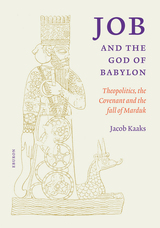
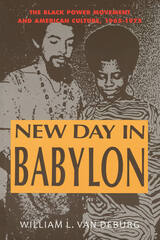
"New Day in Babylon is an extremely intelligent synthesis, a densely textured evocation of one of American history's most revolutionary transformations in ethnic group consciousness."—Bob Blauner, New York Times
Winner of the Gustavus Myers Center Outstanding Book Award, 1993
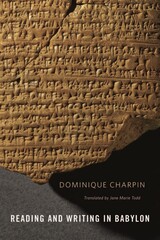
Over 5,000 years ago, the history of humanity radically changed direction when writing was invented in Sumer, the southern part of present-day Iraq. For the next three millennia, kings, aristocrats, and slaves all made intensive use of cuneiform script to document everything from royal archives to family records.
In engaging style, Dominique Charpin shows how hundreds of thousands of clay tablets testify to the history of an ancient society that communicated broadly through letters to gods, insightful commentary, and sales receipts. He includes a number of passages, offered in translation, that allow readers an illuminating glimpse into the lives of Babylonians. Charpin’s insightful overview discusses the methods and institutions used to teach reading and writing, the process of apprenticeship, the role of archives and libraries, and various types of literature, including epistolary exchanges and legal and religious writing.
The only book of its kind, Reading and Writing in Babylon introduces Mesopotamia as the birthplace of civilization, culture, and literature while addressing the technical side of writing and arguing for a much wider spread of literacy than is generally assumed. Charpin combines an intimate knowledge of cuneiform with a certain breadth of vision that allows this book to transcend a small circle of scholars. Though it will engage a broad general audience, this book also fills a critical academic gap and is certain to become the standard reference on the topic.
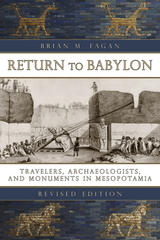
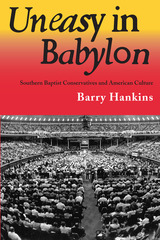
The definitive account of how conservative Southern Baptists came to dominate the nation's largest Protestant denomination
In 1979 a group of conservative members of the Southern Baptists Convention (SBC) initiated a campaign to reshape the denomination’s seminaries and organizations by installing new conservative leaders who made belief in the inerrancy of the Bible a condition of service. They succeeded. This book is a definitive account of that takeover.
Barry Hankins argues that the conservatives sought control of the SBC not or not only to secure the denomination's orthodoxy but to mobilize Southern Baptists for a war against secular culture. The best explanation of the beliefs and behavior of Southern Baptist conservatives, Hankins concludes, lies in their adoption of the culture war model of American society. Believing that "American culture has turned hostile to traditional forms of faith,” they sought to deploy the Southern Baptist Convention in a "full-scale culture war" against secularism in the United States. Hankins traces the roots of this movement to the ideas of such post-WWII northern evangelicals as Carl F. H. Henry and Francis Schaeffer. Henry and Schaeffer viewed America's secular culture as hostile to Christianity and called on evangelicals to develop a robust Christian opposition to secular culture. As the nation’s largest Protestant denomination, SBC positions on divisive cultural issues like abortion have remade the American political landscape, most notably in the reversal of Roe v. Wade.
Hankins also argues, however, that Southern Baptist conservatives sought more than orthodox adherence to Biblical inerrancy. They also sought an identity that was authentically Baptist and Southern. Hankin’s excellent and prescient work will fascinate readers interested in contemporary American religion, culture, and public policy, as well as in the American South.
READERS
Browse our collection.
PUBLISHERS
See BiblioVault's publisher services.
STUDENT SERVICES
Files for college accessibility offices.
UChicago Accessibility Resources
home | accessibility | search | about | contact us
BiblioVault ® 2001 - 2025
The University of Chicago Press






